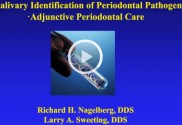Patients with Xerostomia: Causes and Treatment Options
Xerostomia is the subjective sensation of oral dryness, while dry mouth is objective and refers to hyposalivation, defined as reduced or nonexistent salivary flow. The terms xerostomia and dry mouth are often used interchangeably, as is the case in this course. The severity of xerostomia has wide variability, from mild and relatively easily managed cases to severe cases that have a significant impact on the quality of life and are more difficult to manage. While not associated with aging, xerostomia occurs most commonly in older individuals. A variety of medical conditions can have xerostomia as a side effect. The most common etiology, however, is medication induced xerostomia. More than 400 commonly prescribed medications, as well as over-the-counter medications, can cause dry mouth. A diagnosis of xerostomia can be ascertained by a variety of methods, but commonly is achieved by patient dialogue and history. A variety of approaches are available to alleviate its symptoms, with selection depending on the patient and the severity of dry mouth.





